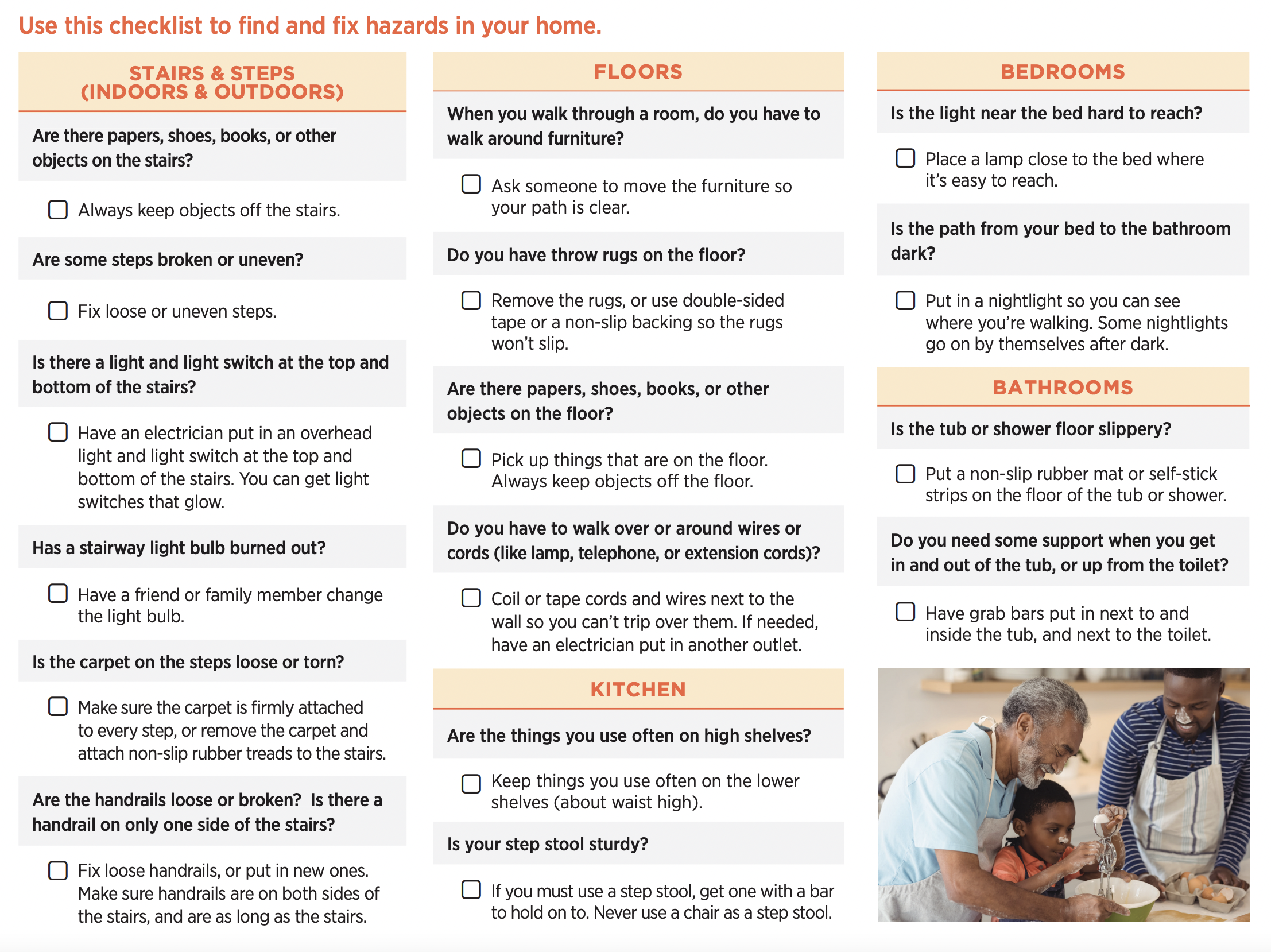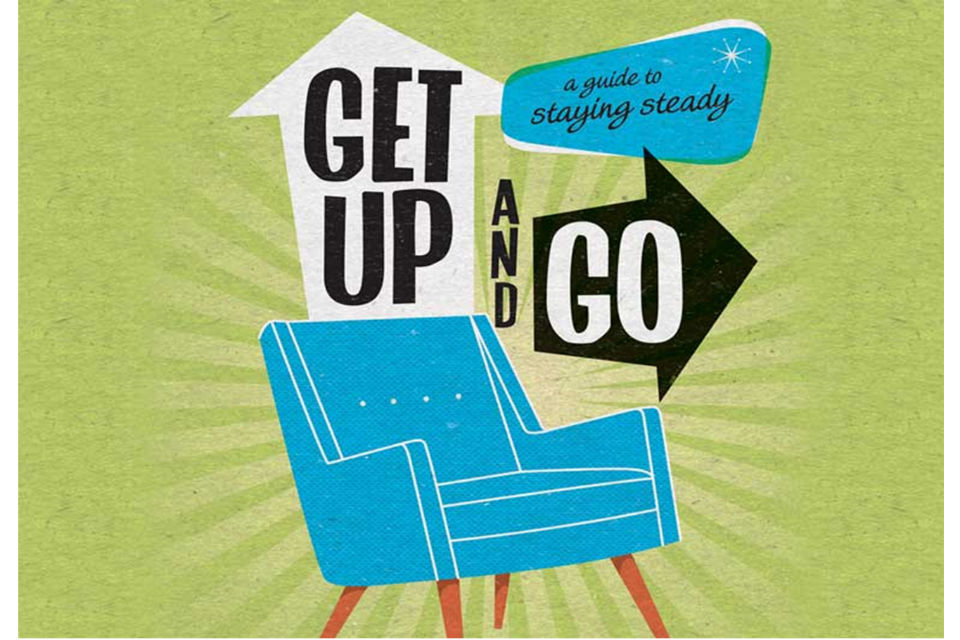How Dementia Fall Risk can Save You Time, Stress, and Money.
Table of ContentsDementia Fall Risk for DummiesThe 8-Second Trick For Dementia Fall RiskDementia Fall Risk Can Be Fun For EveryoneRumored Buzz on Dementia Fall Risk
A loss threat assessment checks to see how likely it is that you will drop. It is primarily provided for older grownups. The evaluation typically includes: This includes a collection of concerns regarding your general health and if you've had previous drops or troubles with balance, standing, and/or walking. These devices examine your toughness, balance, and stride (the method you stroll).STEADI includes testing, analyzing, and treatment. Interventions are referrals that may reduce your danger of falling. STEADI consists of three actions: you for your danger of succumbing to your threat elements that can be boosted to attempt to avoid drops (for instance, equilibrium issues, impaired vision) to minimize your risk of dropping by making use of efficient techniques (as an example, supplying education and sources), you may be asked a number of concerns including: Have you dropped in the previous year? Do you really feel unsteady when standing or strolling? Are you fretted about falling?, your service provider will certainly check your stamina, balance, and gait, utilizing the following autumn analysis tools: This examination checks your stride.
Then you'll take a seat once more. Your service provider will certainly examine how long it takes you to do this. If it takes you 12 seconds or more, it may imply you are at higher danger for an autumn. This test checks stamina and balance. You'll being in a chair with your arms crossed over your upper body.
Relocate one foot midway onward, so the instep is touching the big toe of your various other foot. Move one foot completely in front of the other, so the toes are touching the heel of your various other foot.
Some Of Dementia Fall Risk
A lot of falls take place as a result of numerous contributing factors; therefore, managing the danger of dropping begins with identifying the variables that contribute to fall threat - Dementia Fall Risk. Some of one of the most relevant threat factors consist of: Background of prior fallsChronic medical conditionsAcute illnessImpaired stride and equilibrium, lower extremity weaknessCognitive impairmentChanges in visionCertain risky medications and polypharmacyEnvironmental variables can likewise raise the danger for drops, consisting of: Poor lightingUneven or harmed flooringWet or slippery floorsMissing or damaged hand rails and get barsDamaged or poorly fitted devices, such as beds, wheelchairs, or walkersImproper usage of assistive devicesInadequate guidance of the individuals living in the NF, including those who display hostile behaviorsA effective loss risk administration program calls for a complete clinical assessment, with input from all members of the interdisciplinary team

The care strategy should likewise include treatments that are system-based, such as those that promote a safe atmosphere (proper illumination, hand rails, order bars, etc). The performance of the treatments need to be reviewed regularly, and the treatment plan revised as essential to reflect modifications in the fall danger assessment. Carrying out a fall danger administration system making use of evidence-based best method can minimize the frequency of falls in more information the NF, while limiting the potential for fall-related injuries.
The 2-Minute Rule for Dementia Fall Risk
The AGS/BGS standard recommends evaluating all adults matured 65 years and older for fall threat every year. This screening contains asking clients whether they have actually fallen 2 or even more times in the past year or looked for clinical interest for a loss, or, if they have not dropped, whether they feel unstable when walking.
Individuals that have dropped once without injury needs to have their balance and stride assessed; those with stride or balance problems should get additional evaluation. A history of 1 autumn without injury and without stride or equilibrium problems does not necessitate more evaluation past continued yearly loss risk testing. Dementia Fall Risk. An autumn threat assessment is needed as part of the Welcome to Medicare assessment

Little Known Questions About Dementia Fall Risk.
Documenting a falls history is one of the quality indications for autumn avoidance and administration. copyright medications in specific are independent predictors of drops.
Postural hypotension can usually be relieved by minimizing the dose of blood pressurelowering drugs and/or stopping medicines that have orthostatic hypotension as a negative effects. Use of above-the-knee assistance hose and resting with the head of the bed raised might additionally minimize postural decreases in blood stress. The preferred elements of a fall-focused physical exam are revealed in Box 1.

A TUG time higher than or equivalent to 12 seconds recommends high fall danger. The 30-Second Chair Stand examination analyzes lower extremity strength and equilibrium. Being incapable to stand up from a chair of knee elevation without utilizing one's arms indicates boosted autumn danger. The 4-Stage Balance test evaluates static equilibrium by having the individual stand in 4 positions, each considerably a lot more tough.